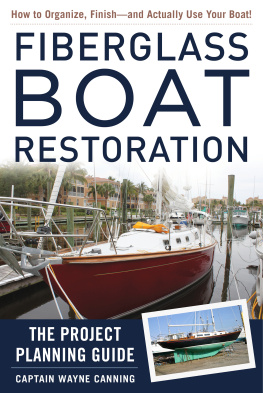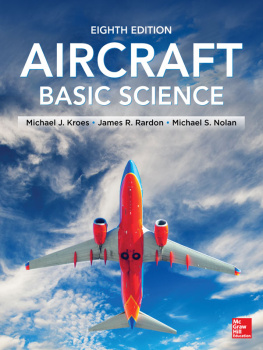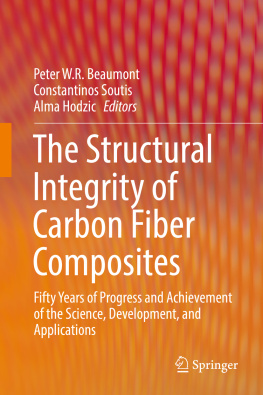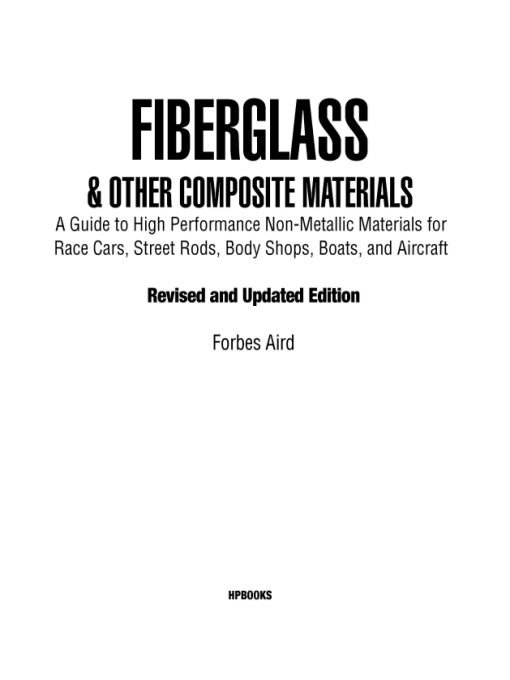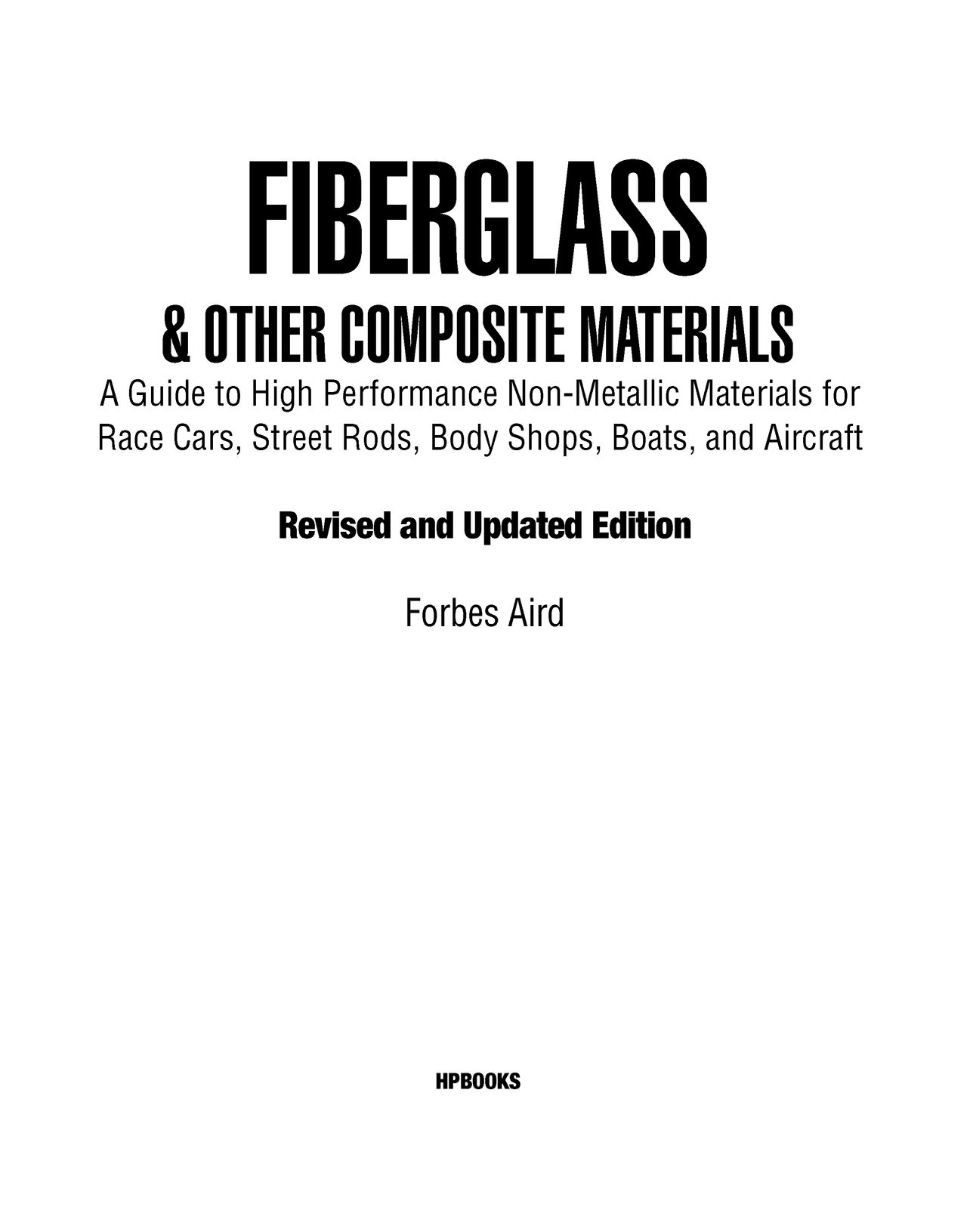Table of Contents
ACKNOWLEDGMENTS
A great many people provided information, illustrations, and helpful advice during the preparation of this book. My thanks to all the companies and individuals who contributed so generously. In no particular order, they are:
Tex Turnier, Knytex Corp.; Patricia Espinosa, the Escom Advertising Group Inc.; Ray Lukich, TR Industries; Larry Ming, Progress Plastics, Toronto; Don Poland, Dow Chemical (Canada), Glendorah Lawrence, DOW Chemical (US), and Jo Albers, Gibbs and Soell, Inc.; The Standard Products Company; Dr. Huy Nguyen, Allied Signal, Fibers Division; Robert D. Hillard, Fein Power Tools Inc.; William R. Donaldson, The FRP Division of Ashland Chemical; Mary Siotkowski, Sue Burkette, and Jim West of Owens-Corning; John Oncken and Dominic Mammoliti, Shell Canada, and Robert Street, Shell Chemicals (USA); Dr. Hal Loken, DuPont; Mr. Herb Oughton, Binks Manufacturing Co.; Starlite Industries; Gerry Crawford and Glas-Craft, Inc. Especially helpful were Bob Lacovara, Sally McKinney and Rob Ryan of the Composites Fabricators Association; Gougeon Brothers Inc, particularly James R. Watson and Brian Knight; Steve Baker of Plastiglas Industries; Paul Halloran of MVP Canada and Rick Scott of Magnum Venus Products; Jane Hooper-Perroud of Callaway Golf; Garry Turgeon of Featherlite Ladders; Tom Elder of E.S. Manufacturing; Easton Sports; Nick Taylor at BulletProofME.com; friend Hans Fischer; Huang Iu and Maggie Lafreniere; Sean Davies of Zero Design; Meagan Costello of HEAD-Penn Racquet Sports; Terri Costello of HEAD Winter Sports; and Glenn Fallis of Voyageur Canoe.
I wish to express special thanks to Randall Rodine, proprietor of Aerodine Composites Group, for opening his shop to the late photographer Jack Gladback. Jacks artful pictures contribute so much to this book.
Finally, to Colin Fisher, Manager, Public Relations, Bombardier Regional Aircraft, for not merely inviting me to spend a most informative morning in a tour of de Havilland Inc.s composites shop, but in arranging that the tour should be conducted by one of the worlds leading experts in the field of aerospace compositesDr. Leonard John of de Havilland. As if this were not sufficiently generous, Mr. Fisher also volunteered the services of staff photographer Guy Levesque, whose fine work also graces these pages. Thanks also to Spyro Cacoutis of de Havilland for additional help. I am deeply grateful for (and not a little astonished by) the extraordinary assistance so graciously extended by Bombardier/de Havilland.
ABOUT THE AUTHOR
Born in Britain, Forbes Aird moved to Canada at the age of nine. He is gradually getting used to the climate. For several years, Forbes career alternated between administrative/research work in various academic institutions, and self-employmentwhich included several years operating a small specialty reinforced plastics shop, and a financially doomed attempt to build a limited-production sports car using RP-stressed-skin construction.
First published in 1965, he began writing full-time in 1986. Despite strong evidence to the contrary, he retains the conviction that he can make a living in this way. Over 100 of his automotive, aeronautical, and science articles have appeared in more than a dozen different magazines in Canada and the U.S. In 1991 he received a Science Journalism Award from The Canadian Science Writers Association; in 1992 the International Motor Press Association bestowed on him the prestigious Ken Purdy Award. This edition of Fiberglass and Other Composite Materials is his twelfth book.
Forbes works and lives in Toronto with his wife, Kate. When not slaving over a hot keyboard, he spends much of his time cooking Thai and Indian curries.
INTRODUCTION
At its worst, a composites shop is a brutally nasty place, where millions of glass particles hang glittering in an atmosphere filled with the howl of chopper guns and the stench of styrene. There, under-supervised workers stumble around red-eyed, tripping over hardened resin spills, reeling from the fumes, cranking out heavy, clumsy, third-rate goods, for a third-world wage. Thankfully, there are fewer such hell-holes these days. Some, not surprisingly, have been shut down by federal or local agencies. But you can still find them.
At the other extreme is a modern aerospace composites facility. The air is clean, with just the barest hint of an odor, as if the floor had been recently waxed. Lab-coated workers move calmly and methodically through this almost antiseptic space, where the only sounds that rise above subdued conversation are the noiselike a zipper being openedof a knife slicing through pre-preg, and the occasional hair-drier hum of a heat gun. No slopping, stinking liquid resin; no sparkling clouds of particles. All this and union wages to boot!
Ironically, for someone just getting into composites work, either as a hobby or in working to establish a small business, one of the appeals of this class of materials is the possibility of getting into operation with negligible investment in facilities and equipment. Working with a primitive plant, though, limits you to the least demanding materialspolyester resin and glass reinforcement. That, in turn, means that the finished goods will necessarily be heavier than a metal part of comparable strength and stiffness. It also means working conditions closer to the first example.
However, if you endure the grimmer aspects of this most basic combination of materials for a while, you can develop sufficient skill (and sufficient business) to justify moving to premium materialstypically epoxy resin and a high-performance reinforcement like aramid. When you reach that point, two things happen. First, working conditions become notably more pleasant; second, you are now in a position to make composite goods that can match or surpass metal ones on the basis of strength and weight, and that opens up a whole new world of applications, especially in the performance-automotive field. While an amateur or small shop operator cannot hope to produce, say, a monocoque tub or composite wing that will outperform those of an Indy or Formula 1 car, it is possible to produce something which will outperform a metal part, and at potentially lower cost, especially if only a few are being made.
It is perhaps a bit like being a fighter pilot in wartimeif you survive the first few combat missions, you will learn some lessons they cant teach in flight school, so your chances of staying healthy improve dramatically. At the same time, you start to score victories. Unfortunately, there is no substitute for being shot atyou need the experience in order to learn the lessons.
Similarly, while later parts of this book are spent in describing state-of-the-art processes, we begin with the basics, in the belief that this is where you should start. The book is a mix of theory and how-to. The theoretical parts will help you decide what types of goods are appropriate for composite construction, and how to design them; the how-to sections are sufficiently detailed that even a novice should be able to successfully fabricate those goods. Once you experience the magical reward of popping out of a mold a shiny new part that you made yourself, youll soon want a repeat dose of the rush of satisfaction and pride. And you can get that payoff without threatening your health; with practice and improved processes, the work can be positively pleasant. Heres how.



